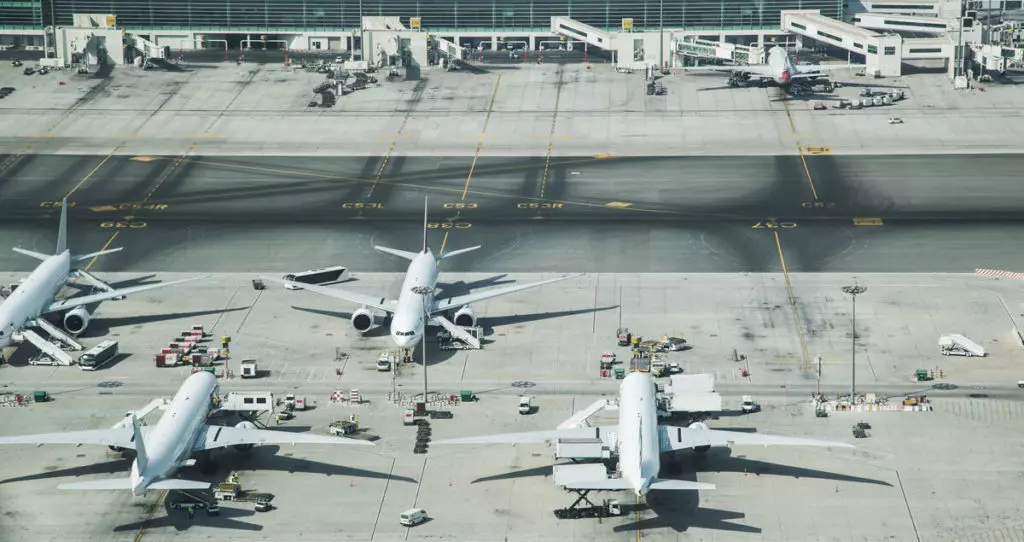In previous blogs on the Netskope NewEdge network, we’ve discussed concepts including Secure Access Service Edge (SASE) architecture and why counting data centers alone is meaningless when trying to understand cloud service coverage. Now that we’ve laid the foundation it seems like a good time to get into what’s needed in terms of architecting the actual network and the connections required. When you navigate this territory, it is common for topics like peering relationships or transit provider selection to come up. For the uninitiated, a quick simplified primer: A transit provider sells you access to any IP destination on the internet, whereas peering only enables two networks to exchange traffic destined for each other. Peering is like two buildings installing a skyway to get from one to the other without having to use the street. It doesn’t give you access to any building in the world, just the one.
For the sake of this blog, I’d like to simplify this by referring to peering and transit collectively as “interconnects,” and the regional selection of transit providers and peering relationships as “interconnection strategy.”

In advance of writing this blog, I noodled with different analogies to use for conveying why interconnection strategy matters. The simplest one I could come up with is a comparison to air travel–which even with the current COVID-19 shutdowns in many parts of the world and our general reluctance to travel nowadays–is an activity many of us can still remember and relate to. Without the Netskope NewEdge network and relying 100% on the public internet and a traditional direct Internet access connection to access SaaS applications and web, it’s like buying the cheapest ticket on a travel site for a flight from San Francisco (SF) to New York (NY) on a low-cost, budget airline.
Many of you are familiar with this scenario and the lack of a seat assignment, paying extra for baggage, plus multiple connections and layovers with as many as three or four hops, from SF to Houston, onward to Chicago, connecting through Washington DC, and then finally arriving in NY. With this flight plan, the routing is incredibly inefficient with increased risk of delays or missed flights, unsure arrival time, or best case a cross-country trip taking a very, very long time. In the path of a packet, this translates into an abysmal user experience.
Every cloud service provider taps transit in one form or another, as it provides that critical interconnection to access every possible public destination on the internet, as you can’t peer with every network on the planet. But there is a big difference between using transit for the majority of all traffic and using it as a last resort. When a security vendor primarily or exclusively uses transit providers to reach the internet, it is no different than the “100% public internet” example above—totally unpredictable. A vendor overly relying on transit is abdicating responsibility for all routing decisions and cost/performance tradeoffs to a commoditized third-party. You will get there, but it won’t be fast.
Using Chicago O’Hare International Airport as an example, it’s crowded and with wintertime lake-effect weather, like clockwork, the airport shuts down or flights get delayed. Accordingly, not all transit is created equal, as it’s still the public internet and setting up a cloud service in a crowded, oversubscribed IX can introduce a new set of performance issues. For this reason, NewEdge leverages the highest-quality transit with careful selection of who we secure transit from, as well as where we deploy our network equipment to make the interconnection. Sometimes this is in public IX facilities or in other cases private exchanges. NewEdge also works with at least two providers (typically more) in every data center location, plus it utilizes redundant links which adds to the resilience of the overall network.
Peering takes things to the next level. It’s like booking the expensive ticket on the premier airline with a non-stop flight from SF to NY that gets you there in the shortest amount of time, de-risking the travel experience from the nightmare of delays or layovers. Translating this to the delivery of cloud services, peering is like that direct flight to the critical applications, content, and data that drive your business. This could be the public cloud providers like AWS, Azure, or GCP where your applications are hosted. It could be the software-as-a-service applications that are key to running your business, like Office 365, G Suite, or Salesforce. Or lastly, access to content delivery networks (CDNs) like Akamai or Limelight where important content like software image updates or antivirus signatures are cached and served from.
When it comes to peering, NewEdge directly peers with Microsoft and Google in every data center we operate today. In comparison, many cloud security vendors only peer with them in a few locations, so it’s important to find out how extensive their peering really is (or is not). Peering in one city only benefits users connecting to the data center in that city. Going back to the air travel analogy, if you live in London and want to get to New York, you care about direct flights from London, not other cities. NewEdge also has extensive peering relationships with other strategic providers including Amazon, Verizon, Cloudflare, Imperva, Dropbox, Box, Yahoo!, Facebook, Zenlayer, Fastly, Softlayer, and Internap, among others across the cloud, SaaS, and CDN landscape. By rolling together the relationships NewEdge has both on transit and peering, this is how we achieve the unique position of being one of the most interconnected networks of any security vendor, interconnections that are critical to delivering a truly world-class service, especially without making performance trade-offs.
This is a major achievement when you consider the number of network adjacencies (or interconnections) maintained by some of the world’s largest Internet companies and how Netskope compares with NewEdge. As of August 2020, NewEdge was one of the “Top 75” most interconnected networks in the world out of hundreds of thousands of BGP networks globally. For customers, this is meaningful since NewEdge optimizes not only the connection and route from the end user to Netskope, but also on the other end, where NewEdge connects to the web and to their applications, content, and data. NewEdge controls every part of its architecture, from the bare metal servers and network gear that gets deployed, to the location of its data centers in 40 (and growing) regions, to an interconnection strategy managed by a team of the world’s top internet routing experts who helped build and scale some of the largest networks and CDNs. This is just part of the secret behind how we deliver our performance advantage. Delivering the lowest possible latency–typically measured in single-digit milliseconds–that translates to the highest throughput, this is what we mean when we say cloud security without performance trade-offs.
Coming back to the air travel metaphor, NewEdge is like avoiding the pain of commercial air travel entirely. NewEdge is the equivalent of taking a fast, luxurious private jet with personalized service at the gate, a flight plan that gets you to your destination ahead of time, and all the accouterments a VIP would expect. It is unique compared to the approaches used by other vendors in the market, but also the right thing to do for our customers since we know performance and user experience matters.
To learn more about Netskope and NewEdge, please visit: https://www.netskope.com/netskope-one/newedge




 Zurück
Zurück 





















 Den Blog lesen
Den Blog lesen